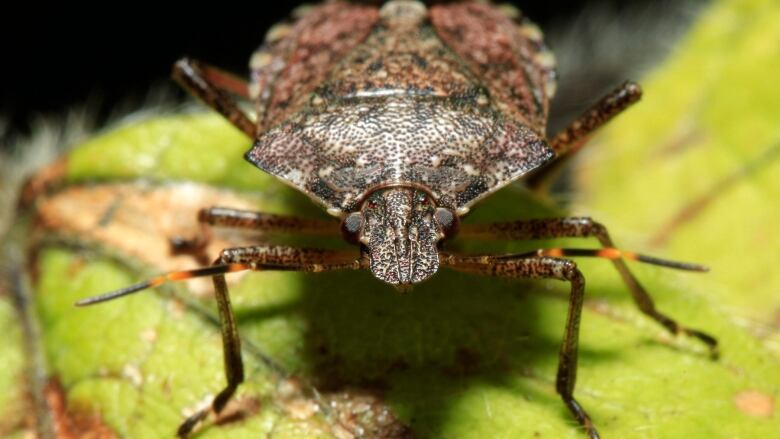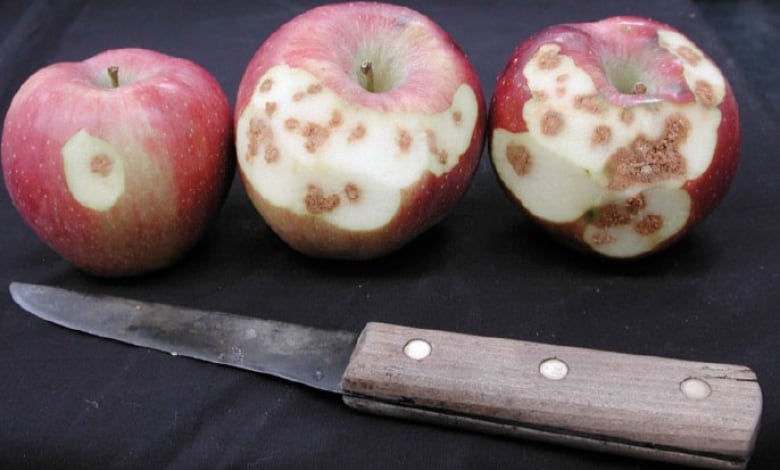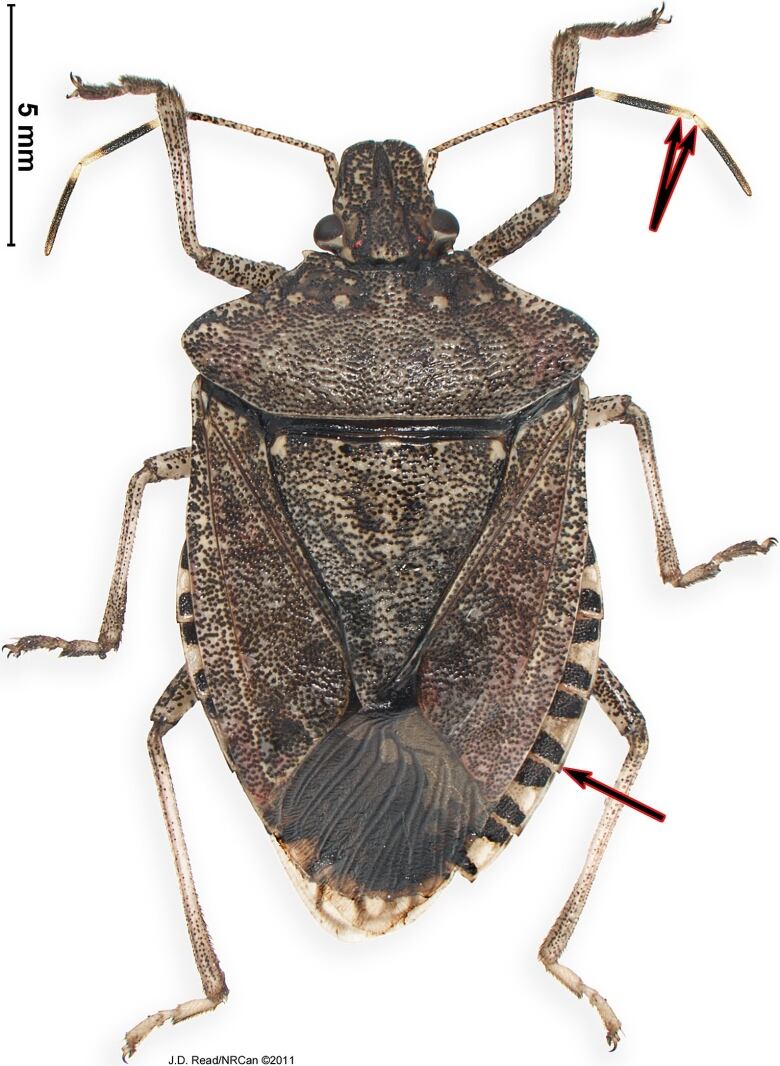Invasive stink bug could cause major damage to Okanagan crops
No reliable pesticide controls for insect that damages fruits and vegetables

British Columbians are being asked to be on the look out for a destructive agricultural pest called the brown marmorated stink bug, after one of the insectswas recently found in Penticton, B.C.
The bugwas discovered in an area close to the Pentictonchannel, said B.C. Tree Fruits field services manager Hank Markgrafin an interview on CBC Radio One's Daybreak South.
The brown marmorated stink bug is an invasive pest thatattacks tree fruits, berries, grapes, vegetables, corn and ornamental plants.

"It's a piercing-sucking insect," said Markgraf.
"It likes to sit on top of grapes or apples or cherries, pierce into the body of the fruit and suck out some juice. That makes a nasty welt on the fruit, making it unmarketable."
The stink bug isa native pest of Asiaand was first identified in North America in Pennsylvania in 2001, according to the B.C. Ministry of Agriculture.
The speciesspread through the mid-Atlantic states and is established in California, Oregon and Washington.
In 2010, the species caused $37 million dollars in damage to the mid-Atlantic U.S. apple industry.

In 2012, astink bug was discovered in Hamilton,Ont. and the pest has since spread to several municipalities across the province and to Prince Edward Island.
That same year, the B.C. Ministry of Agriculture put out a warning about the species, asking people not to bring fruits or vegetables into the province from the U.S. or other provinces.
Now that one stink bug has been located in B.C., scientists want to keep track of other sightings and monitor the insects' spread, said Markgraf.
"I don't know if we can prevent it. We can slow its movement down as best as we can," he said.

"Unfortunately there is no really good way of dealing with this bug. (Scientists) have been trying chemical means, but it is pretty resistant butwe are trying to hopefully get some biological controls for it."
One method agriculture producers use to deter stink bugs is spraying a solution of kaolin clay a non-toxic mineral clay onto the leaves and fruit of some fruit trees, said Markgraf, explaining that the insects don't like to eat through the clay to get to the fruit.
The BCFGA is asking people to keep an eye out for any new-looking stink bugs starting next autumn and take them to the Ministry of Agriculture for identification.
Brown marmorated stink bugs are distinguished from native stink bugs by their bent antenna and distinctive white bands along the antenna and legs, said Markgraf.
With files from Christina Low andCBC Radio One'sDaybreakKelowna.
To hear the full story, click the audio labelled:Brown marmorated stink bug found in the Okanagan












_(720p).jpg)


 OFFICIAL HD MUSIC VIDEO.jpg)
.jpg)



























































































